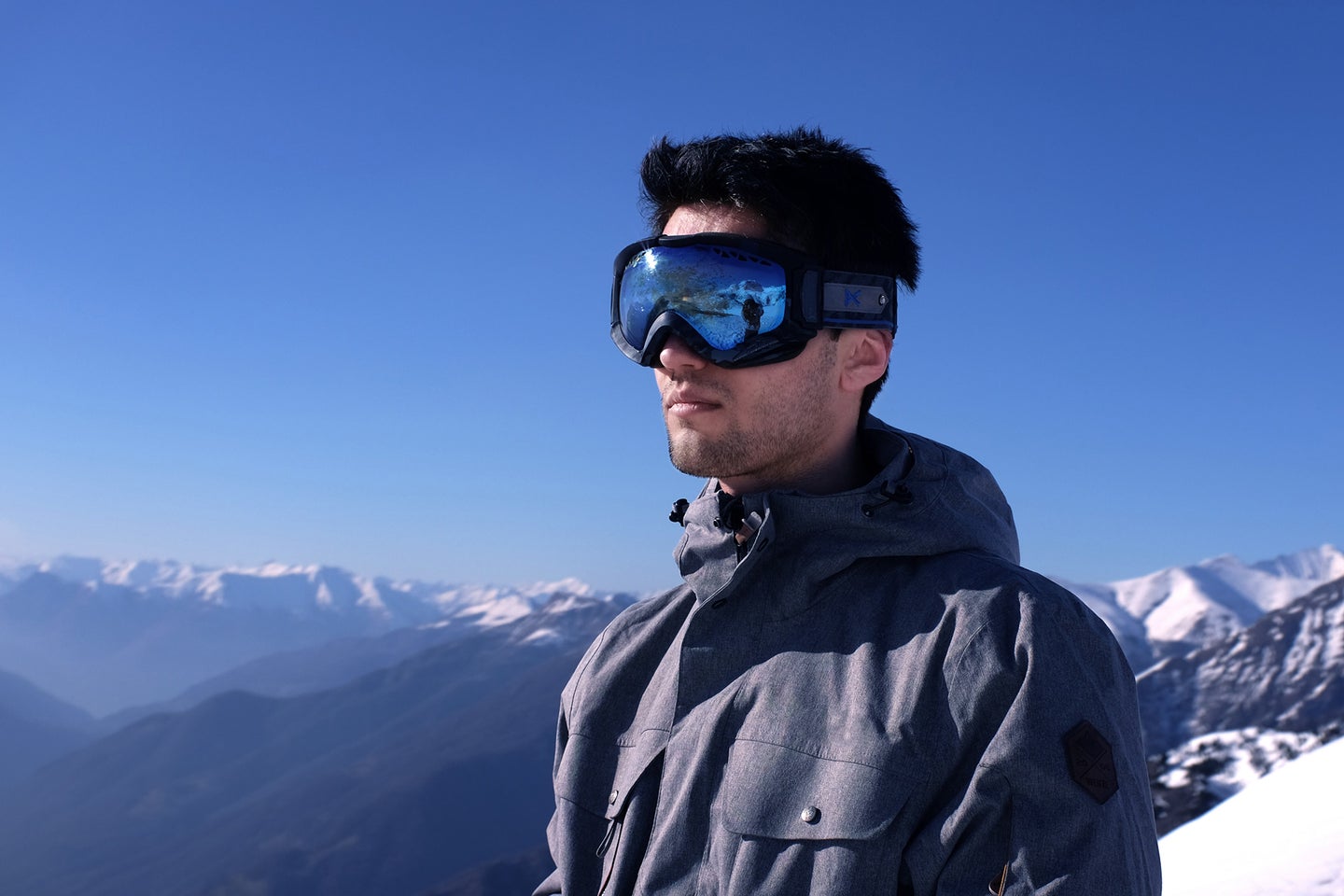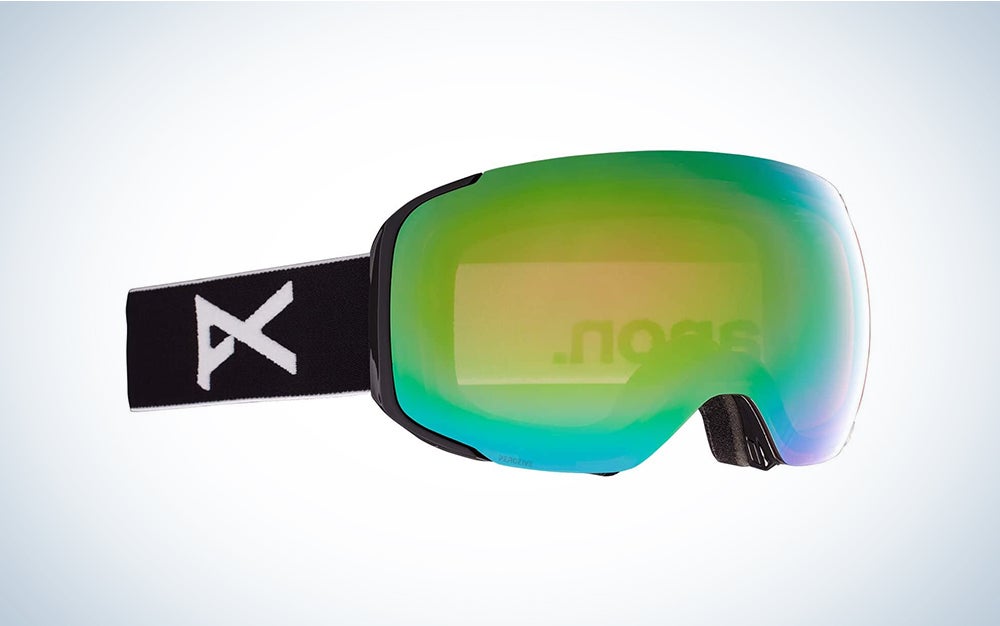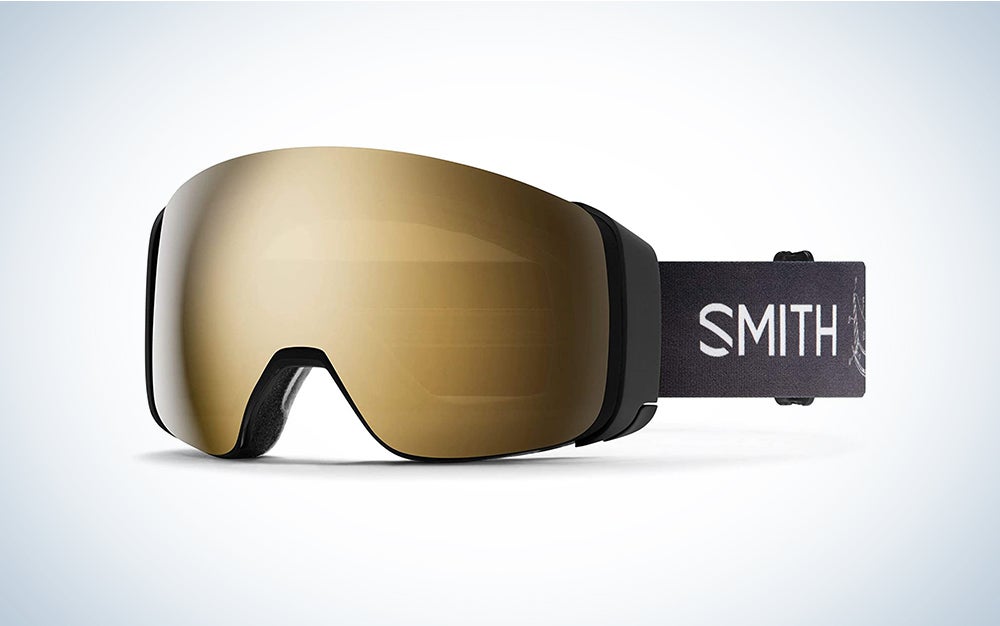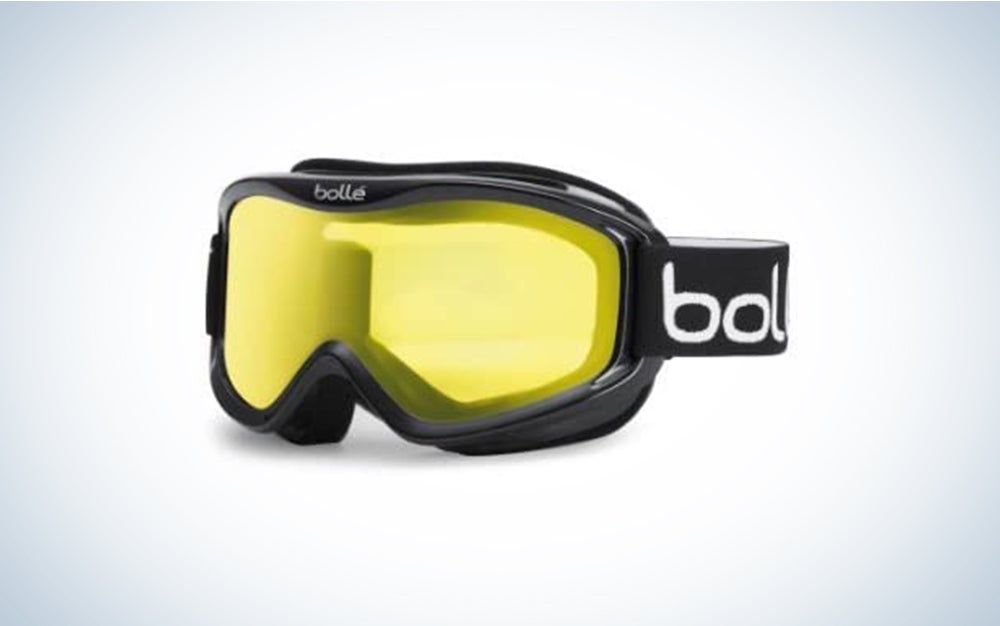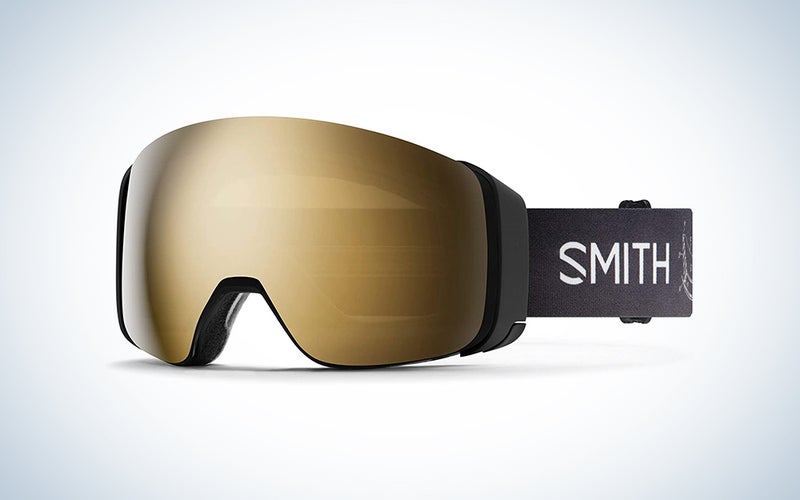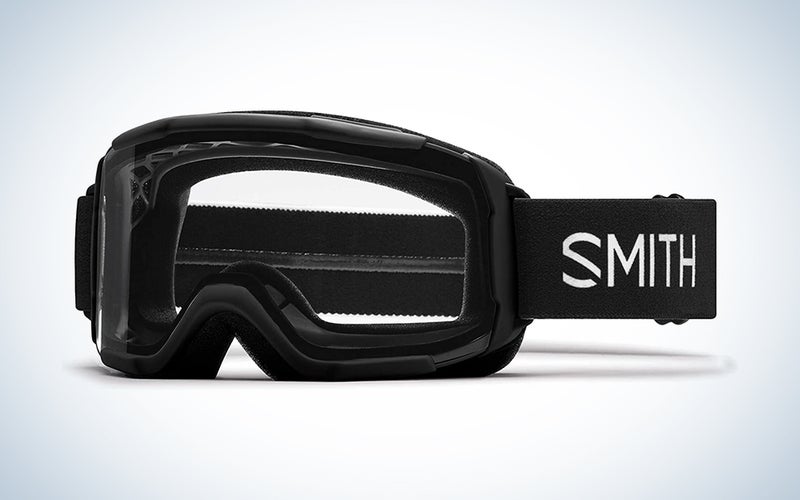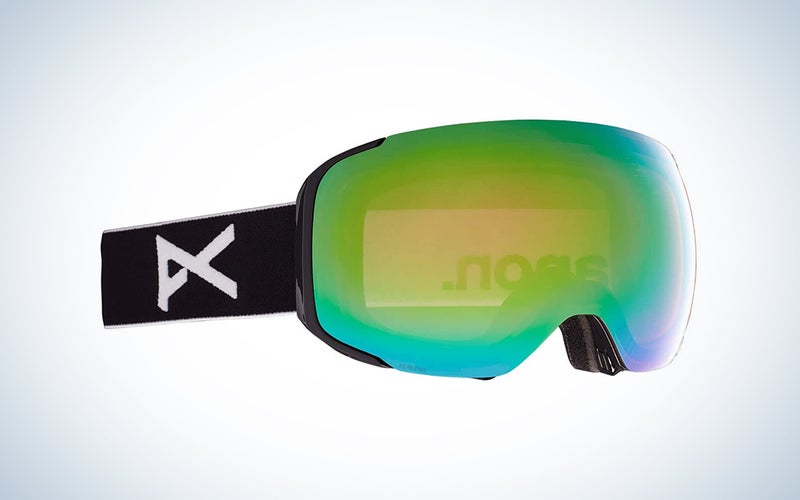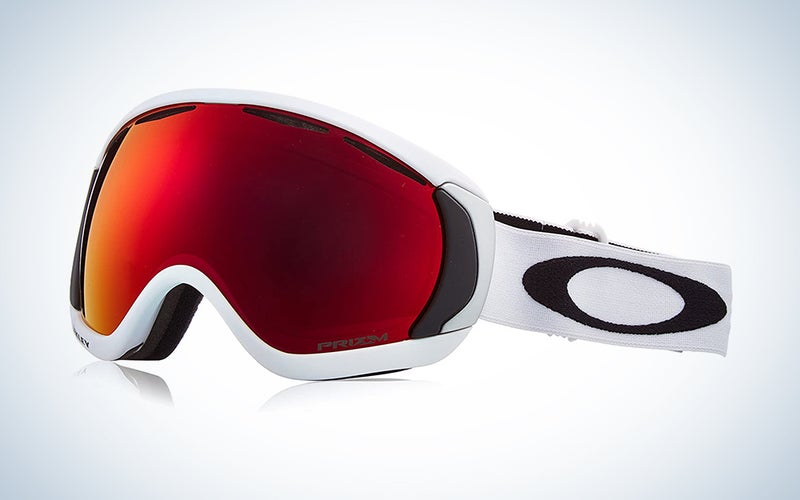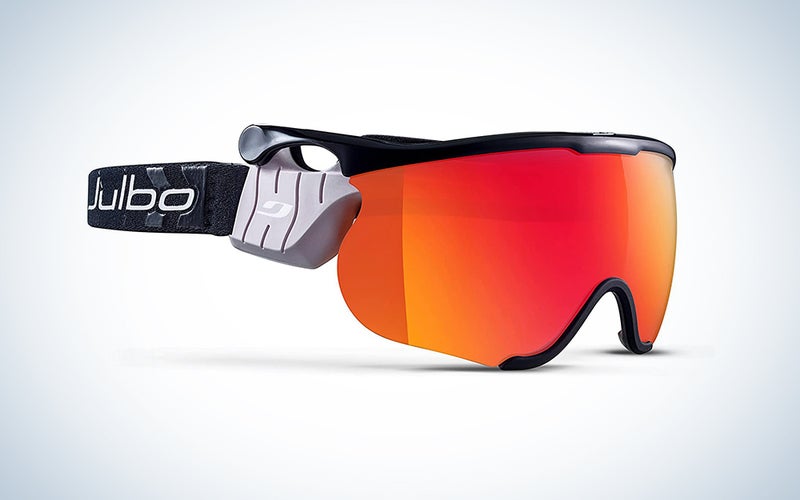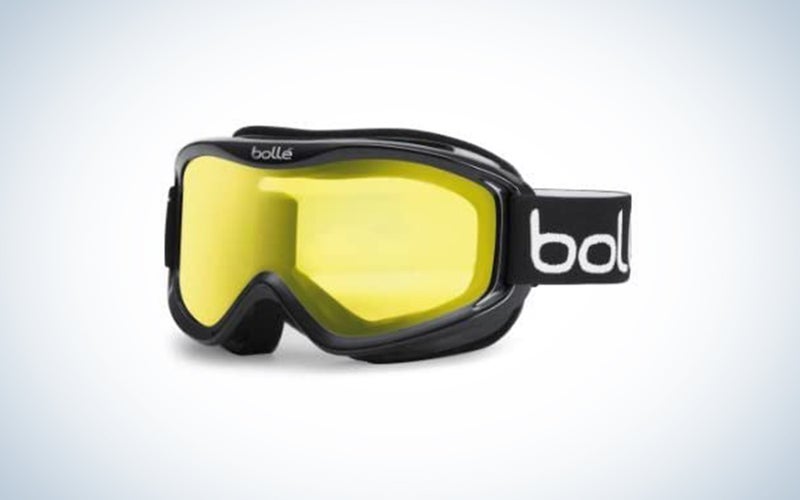We may earn revenue from the products available on this page and participate in affiliate programs. Learn more ›
Getting out on the slopes is a thrilling experience, whether it’s your first time on the bunny hill or whether you are a seasoned park rat. It’s something that is exhilarating, providing what the vets refer to as “bluebird days” filled with fresh air, exercise, and plain old fun. However, getting the right gear like the best ski goggles is important (and don’t forget the best snow boots, heated socks, etc., before you hit the slopes).
Skiing is not a simple sport, especially when you consider all the preparation needed. It can be a good idea to rent some of your ski equipment; this can be particularly smart if you are new to skiing or don’t ski often. However, when it comes to protecting your eyes, it’s always recommended you purchase your own ski goggles. While it’s possible in some places to rent them, it’s not commonplace everywhere and often it’s more expensive than it’s worth. Ski goggles are small in size and generally affordable in cost compared to other pieces of ski gear. There are options that are reasonable for newbies or thrift-minded folks or higher-end tricked-out models for serious skiers. We’ve done the research for you and have highlighted some important features to consider, as well as recommendations for the best ski goggles currently on the market.
- Best with a wide view: Smith Optics 4D MAG Snow Goggle
- Best for kids: Smith Youth Daredevil Snow Goggle
- Best anti-fogging: Anon Men’s M2 Goggle
- Best over-the-glasses: Oakley Men’s Canopy Snow Goggles
- Best ski glasses: Julbo NSniper EVO L
- Best budget: Bolle Mojo Snow Goggles
Features to consider when shopping for the best ski goggles
If you want to find the best ski goggles, you want your windshields to the world to first and foremost protect your eyes from the elements (namely sun, wind, snow, and debris). You are also looking for protection from UV rays and glare. You want your goggles to have a great anti-fogging design and comfortable padding. Consider also a lens that is the right color and mirror for your skiing conditions so you will see the terrain clearly.
Do you want ski goggles with a wide view?
When shopping for the best ski goggles one feature that is crucial is, naturally, visibility. The best visibility is a combination of lens shape, size, and color that matches your anticipated skiing conditions. In order to have the safest and most pleasant experience navigating the slopes you ideally want to have a wide view that allows for optimal peripheral vision.
Typically, goggles for skiing come with two basic lens types: cylindrical and spherical. Cylindrical tend to be cheaper in price, but does not allow for the best peripheral vision. This might be a good enough option for beginners. However, if you want the best visibility you should look for spherical lenses. Spherical lenses have both vertical and horizontal curvatures that help widen your view and also minimize blind spots. Another perk of this lens shape is less distortion and glare.
Advances in lens technology also can be used to increase your field of vision and offer you an overall wide view. Some companies are offering a lens with an exaggerated curvature lens which distorts reality slightly in the favor of your wide view. Finally, if deciding between two lenses, the larger lens will be better for increasing your overall visibility.
Best with a wide view: Smith Optics 4D MAG Snow Goggle
Amazon
When you are looking for innovative ski goggles that have a tremendous field of vision, consider the Smith Optics snow goggles. The enhanced curvature allows for an advanced level of visibility. Also, this quick lens swapping system uses levers and magnets to securely change out lenses to match whatever your sun situation is. Be aware there is some visual distortion with these lenses when looking downward.
Getting ski gear for the kids? Don’t forget the ski goggles
When you are heading out for the family ski trip, you don’t want to forget to bring goggles for your kids. Ensuring you have helmet-compatible ski goggles that fit properly and comfortably is imperative for their safety on the slopes. The best kids’ goggles will most importantly protect the eyes from the sun (UV rays and glare), wind, snow, and debris. Fit is important, although there is some leeway with adjustability. If your kids are very young you want to search for toddler or junior sizing, and if they are older look for youth sizing or even small adults depending on their head size.
Chances are your kids aren’t going to be doing extremely advanced ski tricks—so typically you won’t need to drop a lot of money on the highest-end goggles available. When it comes to lens shape for kids, you can opt for a cylindrical shape which should provide a good amount of visibility for their ski sessions. As with adult goggles, you want to be sure their goggles have anti-fogging technology as fog will impede their vision and might cause accidents. Finally, kids are kids so you better believe they won’t handle much of anything with care. Make sure you go for goggles that offer scratch and impact resistance.
Best for kids: Smith Youth Daredevil Snow Goggle
Amazon
The Smith Daredevils are a great pair of kid’s ski goggles that offer a stylish look compatible with ski helmets. These can be worn over eyeglasses. Available in multiple lens colors these also have optimal scratch and impact resistance. Anti-fogging on the inner lens keeps visibility clear.
Want to be sure your goggles don’t get all fogged up?
One of the sure-fire ways to become aggravated (and on a more serious note, temporarily blinded) is to have your glasses or goggles fog up. This annoying mishap happens when cool outside air and warm air from your body mix. And, unfortunately, it can happen in a flash. Luckily the best ski goggles offer anti-fogging technology to keep your goggles free of condensation and your vision sharply on the slopes.
The best goggles for skiing use various methods to steer the fog away. Features to look for are a double-layered lens which will offer more protection than a single-layered lens. Also, anti-fog coatings can be applied to the lenses. Vents at the top, sides, and bottom of goggles also help eliminate fog issues by creating an airflow. Finally, some higher-end specialty ski goggles even offer small fans to help control moisture and temperature levels. Luckily just the first few features will offer great control against fogging.
Best anti-fogging: Anon Men’s M2 Goggle
Amazon
These anti-fog ski goggles offer a unisex spherical design with Magna-tech for quickly changing lenses. They are compatible for use over glasses and helmets. Anti-fog coating, triple-layer face foam, and full-perimeter vents help keep vision clear.
If you wear glasses, you need a special pair of snow goggles
It doesn’t matter how fancy your mirrored golden ski goggles are, because if you can’t see clearly out of them no fancy bells and whistles will matter. Luckily, when you wear prescription eyeglasses you have a couple of options when looking for ski goggles. First, don’t assume that just any pair of ski goggles will work, because not all will. If you are most comfortable keeping your eyeglasses on under the ski goggles you want to look for OTG (Over the Glass) style ski goggles. Alternately, you can also get prescription ski goggles, typically these work by inserting a prescription lens. When ordering, you must be sure the prescription insert is compatible with your selected ski goggle brand.
The best over-the-glass ski goggles will have space to accommodate your glasses while avoiding pressure on your face where the glasses meet the face, namely your nose and temples. Some goggles will even offer notches inside the goggles that will align at the temples with your eyeglass frames. Often over glass options make the most sense for casual skiers.
Best over-the-glasses: Oakley Men’s Canopy Snow Goggles
Amazon
These ski and snow goggles are an OTG style and offer a flexible frame that is optimized for comfort and fit. Unrestricted airflow along with anti-fog coating help eliminate fogging inside the goggles.
Don’t like how goggles fit? You can try ski glasses
While ski goggles are going to provide the best protection and comfort for traditional downhill skiing, an alternative option for those who prefer less bulk would be ski glasses. Ski sunglasses are lighter in weight and sit on the face similar to the way sunglasses would. This makes them more comfortable to wear and a great choice for cross country skiers and Nordic skiing. They don’t create a seal on the face which makes them stand up well to fogging, they are much wider than traditional sunglasses. Compared to ski goggles they can be easily removed.
The best ski glasses will provide wide coverage over your eyes providing optimal protection from the sun’s UV rays, glare, and some degree of coverage from ice. Lenses should be polarized or photochromic. Some ski glasses look more like traditional sports sunglasses, and others offer a hybrid design that incorporates some aspects of the ski goggle.
Best ski glasses: Julbo NSniper EVO L
Amazon
These comfortable ski glasses offer a hybrid design that features a secure fit and headband strap similar to ski goggles but are lightweight and can easily flip up like sunglasses. The lens is offered in several colors, and provides sun and wind protection and ventilation.
Best budget ski goggles: What you get for under $25
When it comes to the cost of ski goggles, cheap doesn’t necessarily mean bad. Yes, the higher-cost ski goggles will have the best materials and the latest technology including enhanced visibility—but if you are a beginner that really isn’t necessary. When you are starting out you just need the basics, and you can find that in budget ski goggles. The best budget ski goggles will protect your eyes from wind, sun, and debris and offer a venting solution to control airflow and reduce fogging.
Best budget: Bolle Mojo Snow Goggles
Amazon
These budget-friendly, Bolle ski goggles will provide you with all the protection you need to get out on the slopes. The goggles offer a single layer of face foam, double lens, P80+ anti-fog layer, as well as flow tech ventilation. The lens also has an anti-scratch coating. These snow goggles have been on the market for over a decade and are a great solution for beginner skiers.
FAQs
Q: What are the best ski goggles for low light?
When you want to ski on an overcast, cloudy day the light tends to be very flat. Many people find yellow lenses to work well because they will add a little contrast to the surface of the snow which can help you read the terrain. Other options are rose, gold, amber, or green. If the low light condition is due to timing (dusk or night skiing, for example) you should go with a clear lens in order to let in as much light as possible.
Q: What color lens is best for ski goggles?
With so many colors available it is important to understand how colored lenses work while out on the snow. Ideal lens color depends on light conditions. Overcast, cloudy days are best viewed through light pastel lenses. Bright sunny days are better with darker, highly mirrored lenses. If you prefer not to buy two different kinds or a type that allows for switching lenses, you can go with what is called a universal lens. A universal lens works fairly well in all light conditions and is typically a medium copper, rose, or brown tint with little to no mirror.
Q: Are expensive ski goggles worth it?
Expensive ski goggles tend to offer the latest technological advances and enhanced comfort and visibility. The question of whether an expensive pair is worth it, however, really depends on how frequently you plan on using them. If you are a beginner it’s probably smarter to go with a lower-priced or medium-priced ski goggles. If you are more experienced and planning on using the goggles frequently it can be worth it to purchase higher-cost, expensive goggles because you will be taking advantage of the higher-end features and the quality of the materials will help the goggles to last longer.
A final word on shopping for the best ski goggles
The best ski goggles will be comfortable, stylish, and protect your eyes from sun, wind, and snow. With great visibility and ventilation and lenses that enhance your view of the terrain, you will be ready for hours outside on the slopes. Add a pair to your snow gear—plus heated gloves, heated insoles, and a winter hat to help you stay extra cozy—while enjoying hours of sun and snow out on the slopes.
